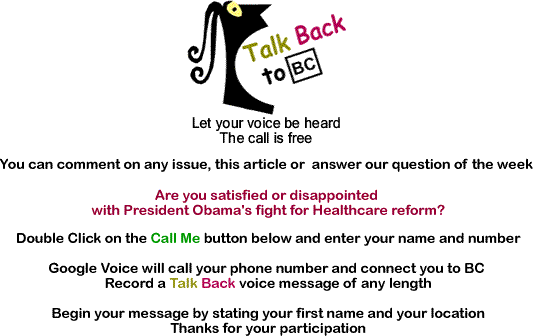
|
||||||||||||||||||||||

|
|
 |
|
In
a move that’s in the finest tradition of worker solidarity, some
900 members of Unite Here Local 1 demonstrated last week outside
While
it’s true that the demonstrators were there for their own and other
workers’ interests in There were times in American labor history when such solidarity was not so much the exception, but it was more or less the rule. “An injury to one is an injury to all” was the cry in earlier days for workers, especially industrial workers, whose unions accepted members from every job in a plant or work location. This
kind of solidarity was common among rank-and-file workers in the
more militant unions and those workers who wanted to join such unions.
Even in the The wave of strikes that swept the country in the mid-1940s and so alarmed the right wing politicians and big business interests was the result of a capping of union activity during World War II. The end of the war was like a cork popping, such was the pressure to regain some of the losses incurred in living standards during the suppression of wages and benefits during the long years of the war. That
may have been the time of the greatest number of strikes - considering
the number of workers in the country - in the history of this country.
Because workers took concerted action - acting in concert - they were seen as some kind of alien force in the bosom of American apple pie: socialist, at the least, communist at worst. The Red Scare and the witch hunts came in the late 1940s and 1950s. The country’s rulers couldn’t be too fastidious in cleaning their house of the rabble that was clambering for some of the fruits of the post-war production. And there was plenty of fruit - money - for several decades, such that union contracts were negotiated time after time without a thought that the good times might come to an end. The solidarity among workers that marked earlier times didn’t seem to be necessary, since there was so much money even the captains of Corporate America were willing to share some of it with their workers. In
a few times in the history of Craft workers (the near-professionals among workers) didn’t really want industrial workers (generally all of the rest) among their ranks. And the vast numbers of “unskilled” workers were standing alone. Among them in the old days were farm workers, domestic workers, waitresses and then, in more recent years, retail workers, electronic and “information industry” workers, and those who work for hotels, and other “hospitality industry” workers at the Hyatt and other places. The lack of solidarity among workers has never been more evident than in the modern era, the 21st Century. There are young workers, many of them college-educated, who have an idea what’s happened to the American economy and they know that they are taking a gamble by not paying out of pocket for health insurance. One sickness or injury will put them in debt forever or in bankruptcy (if the previous Bush Administration had not make it very difficult for individuals to declare bankruptcy, even as it made it as easy as ever for corporations to do so). These are the people who are generally in support of health care reform, one of the most contentious of worker issues in the new century, because it affects so many and because the lack of access to health care kills tens of thousands every year in the U.S. But there are workers who desperately need health care - not to mention good jobs and housing - yet they have been convinced that doing without is the best way to go. They’ve been convinced that any changes in the delivery of health care borders on…socialism! Although they don’t really know what the word means, they are against it, and if their “betters” - such as the bloviators on AM radio or cable television - tell them so, that’s all they need to know. These
things can happen in this manner because, in general, the American
worker is devoid of any idea of his or her history. If there’s an answer to this monumental problem, it’s education. Workers and Americans, in general, need to know their own history. The Robber Barons of the 19th Century were not the friends of labor and the CEOs of Corporate America have never given a thought to the effects of their actions on their workers or on the nation. There’s a lot of catching-up to do. It seems that, at first and at the least, the unions need to set up workers schools, where they can learn the history of their country in the context of their own history and the seeming eternal struggle of ordinary people to survive - to house, clothe, education, feed their families, and see to their good health - while still having the time to spend with their children. Three or four full-time jobs in one family was a thing of the 19th Century, not the 21st. Yet, we seem to be settling in to that kind of social and economic structure, once again. A prime reason for that is that the working class doesn’t see itself as a working class and doesn’t engage in solidarity with their fellow workers. That needs to change and the unions should show some leadership. The institution of organized labor itself needs to show solidarity - for example, first resolving the split between the AFL-CIO and Change to Win - then they need to get to work to teach all workers about their history and the bloody struggles for a decent living standard. The unions are the ones and the only ones who can do it, if they have the will to fight that battle, for their efforts will be opposed by some of the most powerful political and economic powers on earth. BlackCommentator.com Columnist, John Funiciello, is a labor organizer and former union organizer.
His union work started when he became a local president of The Newspaper
Guild in the early 1970s. He was a reporter for 14 years for newspapers
in
|
|
 |
|
Any BlackCommentator.com article may be re-printed so long as it is re-printed in its entirety and full credit given to the author and www.BlackCommentator.com. If the re-print is on the Internet we additionally request a link back to the original piece on our Website. Your comments are always welcome. eMail re-print notice
If you send us an eMail message we may publish all or part of it, unless you tell us it is not for publication. You may also request that we withhold your name. Thank you very much for your readership. |
|
| |
|
| October
1 , 2009 Issue 344 |
|
| Executive Editor: Bill Fletcher, Jr. |
| Managing Editor: Nancy Littlefield |
| Publisher: Peter Gamble |
| Est. April 5, 2002 |
Printer Friendly Version
in resizeable plain
text format or pdf
format. |
 |

|
| |
| |






























 But,
settlements of the strikes with wage gains, some job security, benefits,
and pensions (such as they were) were achieved at a cost.
But,
settlements of the strikes with wage gains, some job security, benefits,
and pensions (such as they were) were achieved at a cost.
 It’s
a classic case of not knowing where to go, because you don’t know
where you came from, let alone where you are now.
It’s
a classic case of not knowing where to go, because you don’t know
where you came from, let alone where you are now.










